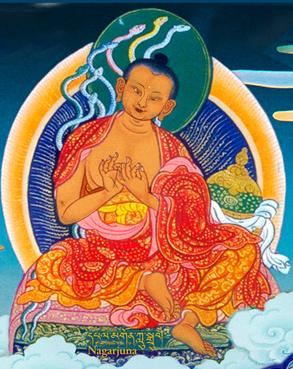Arya Nargarjuna
Mulamadhyamaka-karikas
Fundamentals of the Central Philosophy of Buddhism
 Section 14: An Analysis of Unification (Combination)
Section 14: An Analysis of Unification (Combination)
XIV.1.
That which is seen, sight, and the “seer”: these three
Do not combine together either in pairs or altogether.
XIV.2.
Desire, the one who desires, and the object of desire have to be regarded in the same way,
As also the impurities which remain and the three kinds of “base of sense” (ayatana) which remain.
XIV.3.
Some hold: There is unification (samsarga) of one different thing with another different thing; but since the different-ness
Of what is seen, etc. does not exist, those factors do not enter into unification.
XIV.4.
Not only does the different-ness of that which is seen, etc. not exist,
Also the different-ness of something coming from another does not obtain.
XIV.5.
A thing is different insofar as it presupposes a second different thing.
One thing is not different from another thing without the other thing.
XIV.6.
If one different thing is different from a second different thing, it exists without a second different thing;
But without a second different thing, one different thing does not exist as a different thing.
XIV.7.
Different-ness does not exist in a different thing, nor in what is not different.
When different-ness does not exist, then there is neither what is different nor “this” from which something can be different.
XIV.8.
Unification is not possible by uniting one thing with that one thing, nor by uniting one thing with a different thing;
Thus, the becoming unified, the state of being united, and the one who unites are not possible.
Source: Orientalia





